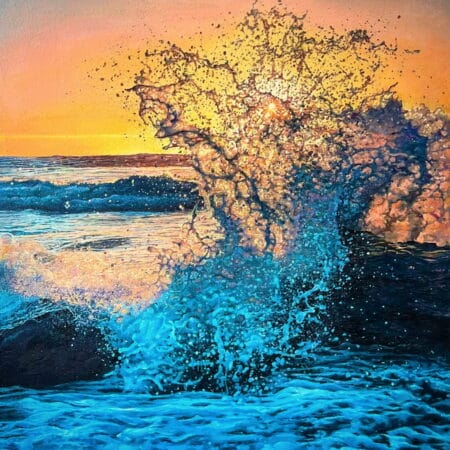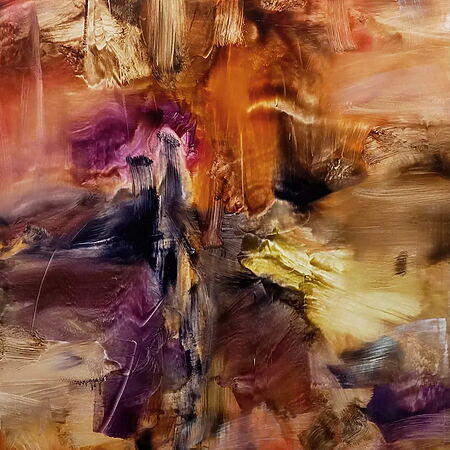Wigmaking has evolved over time from a purely craft-based art form. While wigs once primarily served as medical aids or theatrical props, today they have become coveted design objects that exist at the intersection of fashion, art, and personal expression .
A brief historical overview of the wig: from status symbol to fashion accessory
Since their first mention in history, wigs have been more than just hair replacement – they were a symbol of status, power, and fashion. We'll take a brief journey through the millennia of human history, examining the significance of hair replacement and artificial hair in different eras.
Ancient times: Egypt and Rome
In ancient Egypt , wigs (made from plant fibers or human hair) served both as protection from the sun and as a hygienic measure (protection against lice), since people often shaved their heads. They were also an important status symbol for pharaohs and the wealthy. In Rome , they were worn by women to reflect the fashion of the empire.
Baroque and the court of Louis XIV.
The wig (French: perruque ), often massive, curly, and powdered white, reached its zenith in Europe, particularly at the French court under King Louis XIV (who himself suffered from early hair loss). It was an absolute symbol of power and status for nobles and wealthy citizens. The profession of wigmaker (perruquier) flourished.
From the 18th century to the present day – justice and ceremony
Although wigs quickly disappeared from public view after the French Revolution (late 18th century), they persisted in some contexts. In countries like the United Kingdom , white ceremonial wigs remain part of the official attire of judges and barristers .
20th century and pop culture
In the 20th century, wigs became more affordable due to new materials (synthetic fibers) and increasingly appeared fashion and transformation accessory

Photo by Wolfgang Rottmann @quadratmedia, via Unsplash
Stars like Cher, Diana Ross, and later Lady Gaga and Beyoncé used wigs to constantly change their look. In doing so, they helped to modernize and destigmatize the public image of wigs.
Modern wigmakers combine traditional manufacturing techniques with contemporary design, creating works that go far beyond their functional purpose. They work with the same dedication and precision as sculptors or goldsmiths, only their medium is human hair.
This creative evolution is also reflected in the growing recognition of wigmaking as an independent art form. Exhibitions in design museums and galleries are increasingly showcasing the aesthetic and technical dimensions of this unique art form. This brings an often overlooked craft into the focus of a wider public.
Material selection as an artistic decision
The choice of materials represents the first artistic act in wig making. Human hair, especially European hair, is considered the most precious material, comparable to the finest pigments in painting or the purest marble in sculpture. Each strand of hair is selected for its structure, shine, and depth of color.
Wigmakers must develop a deep understanding of the natural properties of different hair types. They study the direction in which hair falls, its reflection of light, and its dynamic movement to achieve a result that not only looks natural but also possesses its own aesthetic quality.
Color design requires a particularly delicate touch. Much like painters mix their colors, wigmakers combine different hair tones to create natural shades and highlights. These subtle nuances give each wig its individual character and make it a unique work of art.
Craft techniques between tradition and innovation

Photo by Markus Spiske @markusspiske, via Unsplash
The actual production of a high-quality wig combines time-honored techniques with modern innovations. Knotting individual hairs into the finest tulle fabric requires dexterity that demands considerable practice. Every knot must be precisely placed to create a natural-looking hairstyle.
Wigmakers employ various knotting techniques, which vary depending on the desired effect. The ventilation technique, for example, allows for particularly natural-looking hairlines, while other methods create more volume or specific movement patterns. This diversity of craftsmanship makes each wig a unique masterpiece.
Modern technologies complement traditional skills. Computer-aided design processes help ensure a flawless fit, while new materials for the wig cap offer greater comfort and durability. This symbiosis of old and new characterizes contemporary wigmaking as a vibrant craft.
The search for masterful quality

Photo by DAVIDCOHEN @davcohpho, via Unsplash
For art lovers and connoisseurs, the question arises: where can they find such handcrafted masterpieces? Specialized studios that focus on high-quality craftsmanship are few and far between. They often work in secluded locations, far removed from mass production, and dedicate themselves entirely to individual creation.
When seeking exceptional craftsmanship, it's worth relying on established names. For example, those high-quality wigs in Munich will find not only expert craftsmanship but also artistic consultation in specialized ateliers. These workshops see themselves as creative partners who work together with their clients to develop unique solutions.
See this post on Instagram
Investing in such quality is justified by the longevity and aesthetic superiority of handcrafted wigs. They are not merely functional objects, but rather an expression of individual personality and a testament to masterful craftsmanship. Transparent production processes build trust.
4 internationally renowned representatives of their profession
The field is closely linked to the makeup artistry and hairdressing trades and has often been shaped in the media world by brands or creative minds from the fashion and film industries. Here are four internationally significant figures whose work has caused a sensation and sparked innovation:
Ellen Wille (Germany)
-
What makes her special: As the founder of ellen wille – The Hair-Company, she is Europe's leading manufacturer of wigs, hairpieces, and toupees. Her work is characterized by the highest quality standards , attention to detail, and a strong focus on current fashion trends and timeless style.
-
Individual Influence/Innovation: Ellen Wille is considered an innovation leader, particularly in the introduction of new materials. A significant contribution is the Prime Power Collection , which features models made from the innovative Prime-Hair mix (real hair and heat-resistant synthetic hair), combining exceptionally advantageous wearing properties. She made luxurious and natural-looking hair replacement accessible to a broad target group.
See this post on Instagram
Shay Ashual (Israel/USA)
-
What makes him special: He is a world-renowned hairstylist and wigmaker who frequently works with high-profile celebrities like Gigi Hadid and Kylie Jenner, as well as for major fashion shows and editorials. His wigs are often so natural and stylish that they spark media speculation about whether it's a new haircut or "just" a hair replacement.
-
Individual Influence/Innovation: Ashual represents the fusion of wigmaking and high fashion/pop culture . He has significantly contributed to establishing the wig as a pure fashion statement and a means of quick transformation. His specialty is often deceptively realistic, custom-made pieces that blur the lines between natural hair and hair replacement.
See this post on Instagram
Raquel Welch (USA)
-
What makes her special: As an iconic actress and fashion figure of the 60s and 70s, she founded one of the most renowned wig lines. Her brand is known not only for its elegance and stylish design, but also for its contribution to destigmatizing wigs as a fashion accessory.
-
Individual Influence/Innovation: Her line is known for its focus on comfort and a natural look through high-quality materials and innovative manufacturing techniques (e.g., improved caps). Raquel Welch used her celebrity status to make wigs an expression of confidence and style , which helped the industry's image worldwide.

Justin Hoch, CC BY 2.0, via Wikimedia Commons
Jon Renau (USA)
-
What makes it special: Jon Renau is an internationally recognized brand known for its wide range of human hair and synthetic hair wigs. They place particular emphasis on a secure and comfortable fit for their products.
-
Individual Influence/Innovation: The brand is known for its innovative technologies in wig construction, such as the "SmartLace" technology, a particularly discreet film hairline that simulates a natural hairline. These technologies have a significant impact on improving the fit and breathability of wigs, making them especially popular for medical use.
See this post on Instagram
Wigs as an expression of contemporary design culture
Modern wigmaking has found its place in contemporary design culture. Designers and artists are increasingly discovering the creative potential of this medium, creating works that are both Terms & Conditions and exhibition-worthy. This development underscores the shift from the purely functional to the artistic.
At international design fairs and in galleries, wigs are now presented as independent works of art. They tell stories, convey emotions, and question societal beauty ideals. This artistic dimension makes them a captivating collector's item for art lovers.
The recognition of wigmaking as an art form opens new perspectives for this time-honored craft. It demonstrates that true mastery knows no boundaries between applied and fine art . In a time when individuality and personal expression are becoming increasingly important, this art form continues to gain significance.
Current trends in wig making
The wig market is currently dominated by two main trends: naturalness (often for medical or daily use) and high-fashion transformation .
- Front lace technology: This is the gold standard for a natural look. The hair is individually attached to a thin, transparent mesh (lace) at the front edge of the wig. This makes it look as if the hair is growing directly from the scalp.
- Volume and texture: There is a high demand for wigs that perfectly mimic specific, often hard-to-achieve textures – from naturally curly (Curly/Coily) to perfectly straight hair (Sleek).
- Custom-made: More and more people who need permanent hair replacement (e.g., due to alopecia) are investing in highly individualized wigs that are precisely tailored to their head size, hair color, and density.
- Vibrant colors: Especially in pop culture and social media, wigs in strong, unnatural colors (neon, pastel) are popular because they allow you to change your look without damaging your own hair.

Owner and Managing Director of Kunstplaza. Journalist, editor, and passionate blogger in the field of art, design, and creativity since 2011. Successful completion of a degree in web design as part of a university study (2008). Further development of creativity techniques through courses in free drawing, expressive painting, and theatre/acting. Profound knowledge of the art market through years of journalistic research and numerous collaborations with actors/institutions from art and culture.

















